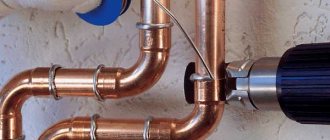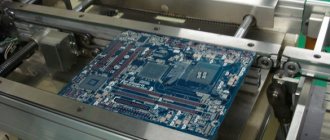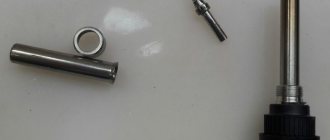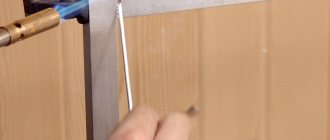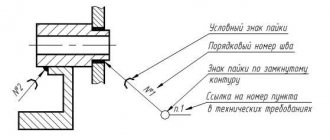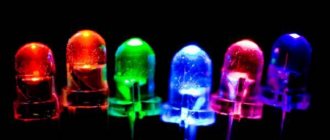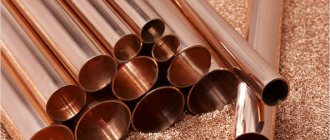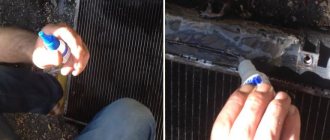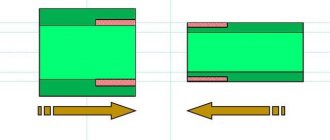Silver soldering
The process takes place using a special solder, the structure of which is selected to match the sample of the precious metal. The action can be performed using two tools:
- electric soldering iron;
- gas burner.
Silver is placed on a flat surface with low thermal conductivity, which is not susceptible to temperature influences; brick is an excellent object for these purposes. The soldering area is treated with flux, and a piece of material for soldering of the required size is placed nearby. It is better to solder silver with a torch; with smooth, uniform movements, the metal warms up to the desired temperature.
At home, soldering requires certain skills and qualifications. Selecting the correct flux and solder requires practice, experience, and knowledge of component markings. It is not recommended to use scrap silver as a soldering compound. The melting point of the part must be lower than the precious metal, otherwise there is a possibility of ruining the segment.
Having melted the product evenly, you need to continue the operation until a high-quality seam is created. Solder can be placed in small quantities and then added as appropriate. At the end of the operation, it is necessary to clean the product from residual soldering substances and flux; this action is performed with fine-grained sandpaper to avoid scratches and other damage.
To lighten the compound, a solution of citric acid is used, and blackening occurs with iodine. When carrying out activities, it is important to remember safety precautions; the process must be carried out in a ventilated area, the operator must wear personal protective equipment.
Preparation of materials and equipment
Soldering of silver must be done using special solder. In addition to this, you need to choose what will heat the metal. A soldering iron or gas torch can be used for this.
You need to work with silver on a surface that does not heat up when heated. It should be smooth and firm. This could be a brick, a plate of decorative stone, or heat-resistant ceramics. Additionally, you need to prepare citric acid and iodine. Using citric acid you can lighten the material, and darken it with iodine. In addition to a soldering iron or gas torch, flux and solder, you will need hand tools - metal tongs, a brush and wire cutters.
What kind of solders are used?
Solders for soldering silver are sold in hardware and construction stores. The form of release of connecting compounds may be different. There are powder mixtures whose particles reach 2 mm. You can find whole sheets that are first cut into pieces of the desired size and then used for soldering.
Working with hard solders
Soldering with silver solder is similar to working with tin. A strip of solder of the required width and length is applied to the surface to be joined. The damaged area and the connecting substance are covered with flux to avoid the onset of oxidative processes. By heating the solder with a torch or soldering iron, the technician evenly distributes it over the area of the breakdown.
Silver solder
How to choose a flux for soldering
In order for the flux to be evenly distributed over the damaged surface and reliably fasten the parts together, it is necessary to choose the correct soldering composition. To protect the finished connection from moisture and chemicals, it is necessary to choose a composition that is protected from corrosive processes and aggressive environments.
Making your own flux
The flux used to hold silver pieces together is a mixture of aqueous solution and borax. You can make it yourself:
- Borax powder is poured into an empty metal container.
- Fill with distilled water.
- Heat over low heat until the powder is completely dissolved.
- The mixture is cooled at room temperature.
- Grind the crystals, mix with water and mix thoroughly until a thick mass is obtained.
The flux must be left to stand for 1–2 hours. Pour out the water remaining around the mass.
Soldering tool
At home, it is difficult to find a professional tool for joining silver parts. In most cases, people use an electric soldering iron or a gas torch.
The quality of the work performed directly depends on the heating tool. Low-power soldering irons are not suitable for repairing silver products, since the parts need to be heated to 350 degrees. It is advisable to use a tool with a thin tip so that an accurate connection can be made.
Soldering iron
What kind of solders are used?
Silver additives are produced in different types and are used when soldering objects made of steel, as well as other alloys common in industry. Various parts contain other elements, the composition is reliable and has good quality indicators when connecting components. The main feature is the corrosion resistance of the connected components treated with silver.
In production, the most popular compounds are the PSR-10 and PSR-15 brands.
Soldering silver solution has different characteristics, the number at the end of the marking indicates the amount of precious metal in the composition. If there are high demands on the anti-corrosion resistance of the seam, grades PSR-70 and higher are used, however, such substances are expensive and are used by large industries. Soldering of silver is carried out according to various requirements, so the choice of composition before production must be approached competently.
Solder PSR-10
The form of release of material for soldering can be different, depending on the purpose and content of various alloys. It is sold in the form of powder or pieces of 2 mm or more; there are variations from a single sheet, which is easily cut with nippers to the required sizes. When working with wires, an element disguised as a wire is suitable; it is easy to transport and add in small proportions.
Soldering tool
At home it is possible to repair any item, the main thing is desire. Silver parts are no exception; jewelry often breaks or develops cracks after mechanical stress. A trip to a jeweler can cost a pretty penny, and the quality of the work and the material used may be questionable.
Soldering iron
It’s not difficult to do it yourself; it’s important to carefully choose a tool. At home, you can use a soldering iron. It is important to note that not every electric heating equipment can heat the tip to a significant temperature. A regular soldering iron can heat the tip up to 350 ⁰C, which is not enough to melt parts.
Jewelry repair shops use a gas torch; it can heat the steel to the required level. It is possible to operate with heating equipment with increased power and a thin tip, however, such actions can only be performed with solders that do not have a high amount of mixture in the structure.
Preparation of materials
An electric soldering iron is included for soldering radio parts using solders containing silver in the structure. It will not be possible to connect a piece of jewelry with a soldering iron due to the lack of sufficient performance. For operations with such components, a thermal drill is used, as well as the following materials:
- high-temperature-resistant raw materials – brick;
- rosin;
- acid solution;
- tweezers, brush, nippers;
- copper tongs, a small piece of rag.
Silver Soldering Tools
Colophonium is used as a flux for production. The purpose is to form a film to avoid interaction of the substance with oxygen during operation. For jewelry crafts, a special compound is used; if stores do not offer appropriate options, it is possible to make rosin yourself. Borax and potash are mixed in one to one proportions, powdered borax crystals are ground with potash, the result is flux.
Non-silvered solders
During production, it is highly recommended not to use products that contain lead. This is due to the fact that traces of lead are difficult to remove, and reliable fastening is obtained in isolated cases. Lead is also toxic, and jewelry is usually worn in visible places on the body. With prolonged wear, the skin may react to toxic lead, which can be absorbed into the skin.
Soldering silver at home using tin
Tin wires are used extremely rarely when working with silver metals; it is possible to fasten parts, but there are negative factors:
- the seam is noticeable, different metals will give off a tint in sunlight;
- Tin darkens when in contact with water or exposed to a high humidity environment.
For silver parts of printed circuit boards, a soldering element of the POS-60 brand, which contains a large proportion of tin, can be used. The release form often looks like a wire with a flux composition.
How to solder silver with a soldering iron
Jewelry items are repaired using a gas torch or an electric soldering iron. Before soldering silver at home, it is important to determine the sample. High-grade metals are not exposed to the temperature of a soldering iron. If you have funds or a complex product shape, it is better to contact specialists.
It is prohibited to solder jewelry items with enamel or blackening, or hard soldering elements.
Fixed gemstones must be removed before soldering, otherwise they may crumble and deteriorate when exposed to high temperatures.
It is impossible to melt solid silver substances with a mains-powered electric soldering iron. For reliable fastening, high rates of melting of the substance are required; heating equipment forms a surface fastening of the elements.
Soldering silver with a soldering iron
Using an electric soldering iron, it is possible to fasten massive parts with silver solder; the tool is often used to work with lead-tin substances.
How the process itself works
To connect parts together and repair the product, you need to know how soldering works at home. The entire course of repair work will depend on the choice of heating tool.
How to solder silver with a soldering iron
Knowing the technology and features of silver soldering, you can make a reliable connection without defects. Work progress:
- Working surfaces are cleaned of dirt and degreased.
- The parts are clamped in a vice.
- To protect against oxidative processes, a layer of flux is applied to the joint.
- When working with a soldering iron, the flux should cover the joint in an even layer.
Flux residues are removed with an acid solution.
How to solder silver with a gas torch
Work progress when soldering silver objects:
- Parts must be secured to a non-flammable surface.
- The adhesion site is cleaned and degreased.
- Powdered solder is applied to the joint. The top is covered with flux.
- A connecting shock is created using a gas burner. It is important not to blow the solder away with the flame.
How to solder with a gas torch
For high-quality and reliable fastening of elements, a gas burner is used. Using a tool, it is possible to heat the required section to 1200 ⁰C; soldering of silver at home occurs at around 960 ⁰C. The process is carried out as follows:
- Before any soldering operation, the components are degreased and oxidation is removed using sandpaper.
- After mechanical impact, the part must be washed and dried. Rosin, purchased in a store or made at home, is applied to the joining surface.
- The product is secured with a vice or a special fastening device is used; during operation it will be impossible to hold a certain section with any tool. Heating requires the use of both hands; the product must be moved during the process.
- Switching on occurs by moving the gas regulator to the appropriate position. The flame jet is regulated by supplying or reducing the amount of gas. It is important to remember that carrying out activities with gas is a fire hazard; it is necessary to organize ventilation of the room.
- The designated soldering area is heated by a jet of flame, evenly distributing the size of the torch over the surface of the silver product. The flame must be controlled visually, ideally it has a dark core, the increased temperature is produced by the core of the torch. Activities for repairing jewelry items of various mixtures at home are carried out using an outer layer of flame, the performance corresponds to melting in all respects.
- After the melting operation has begun, it is necessary to bring the wire to the seam. Under the influence of high temperatures, the metal intended for soldering will begin to melt and fill the seam by gravity.
Soldering silver with a gas torch
There are mixtures in powder form; they need to be mixed with flux and first applied to the joint. In this case, the heating device does not need to be directed at the substance, otherwise it may melt and spread or oxidize in advance.
Basic mistakes during soldering
There are a number of mistakes that beginners make when soldering:
- Unreliable fastening of parts to the working surface.
- Strong flame pressure in a gas burner, which blows away the solder.
- Overheating of parts.
- Using a large soldering iron for a small connection.
To avoid injury, it is important to follow safety rules and wear protective equipment (gloves, jacket with sleeves, pants).
Soldering silver is a process that can be done at home. To do this, you don’t have to spend money on craftsmen. All you need to do is find a heating tool, flux and solder.
Solder selection
The selection of the appropriate type of mixture when soldering steels is carried out in accordance with the structure of the raw material. Solders containing silver make it possible to produce strong seams with a uniform, dense cut. These types have increased anti-corrosion properties, which makes it possible to use them with substances exposed to aggressive environmental influences.
For home use and household needs, ordinary products are used, a mixture of which contains tin and a small amount of silver; soldering can be used for radio equipment and other household appliances.
To repair fittings, various pipes and other substances with a copper content of more than 57%, a structure marked PSR-12 is used. For structures with high requirements for reliability and strength, it is important to use more saturated materials. You need to know that there are products with a silver content of up to 70%.
Solder POS-40
POS-40 in packaging
As an alternative to tin soldering, silver-zinc is used. The price of such a product is high, but it pays off when used with steels of increased brittleness. Common solder in radio engineering is POS-40 solder, which contains 2.5% silver.
Do-it-yourself flux preparation
There are several ways to prepare flux at home. Basic tools and materials that may be needed during manufacture:
- A gas stove heats the substance to a liquid state.
- A spoon is used to dose the powder.
- A steel container or mortar is used to grind solid rosin into small particles.
- Sealed storage container.
After preparing the powder, it is necessary to prepare a solvent. The element is heated to the required temperature, usually a solution with proportions of 1 to 1 is used. The solution prepared at home is mixed with a spoon until all particles transform into a liquid state. During the process, the mixture acquires a yellowish tint.

